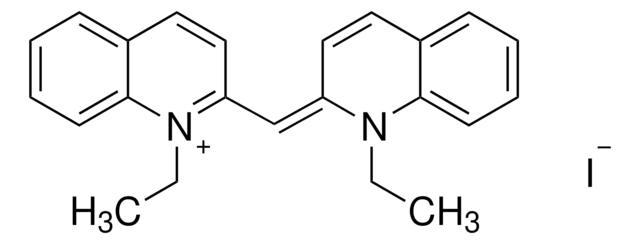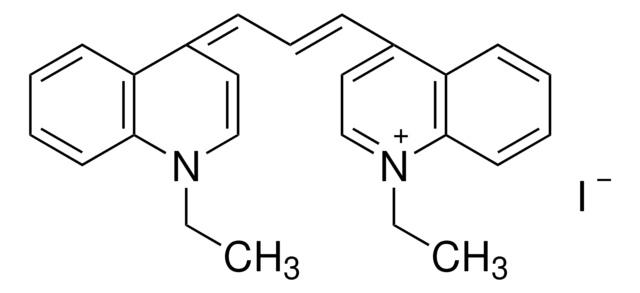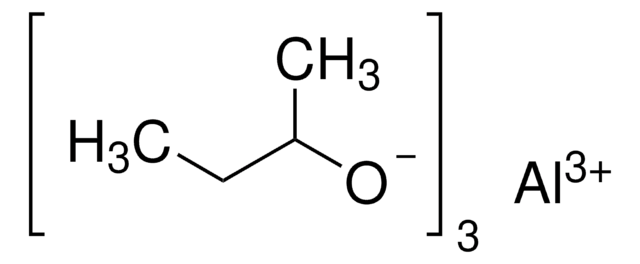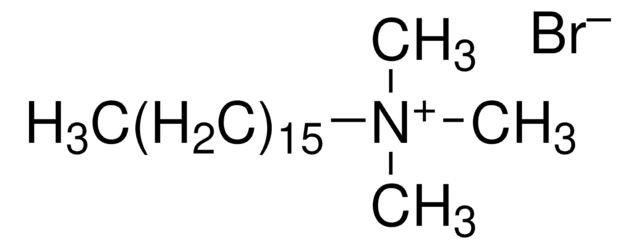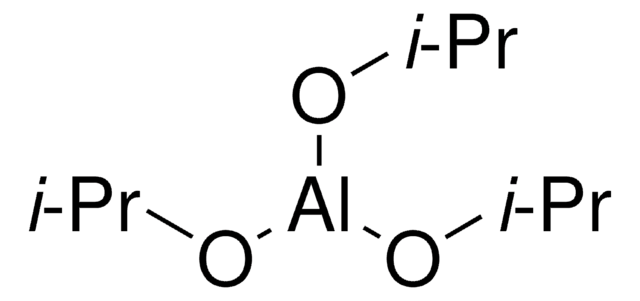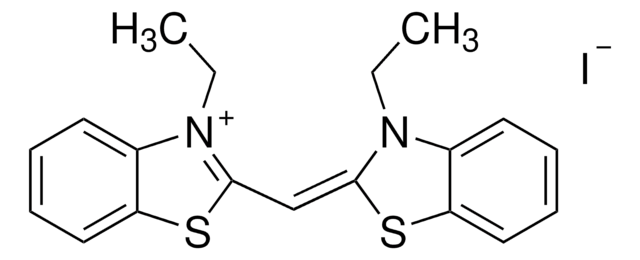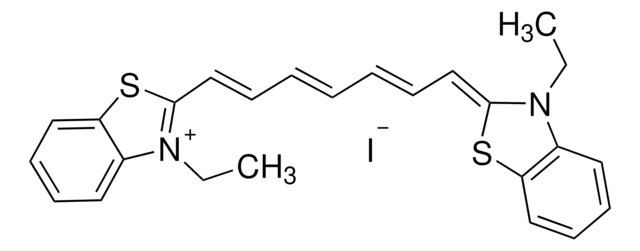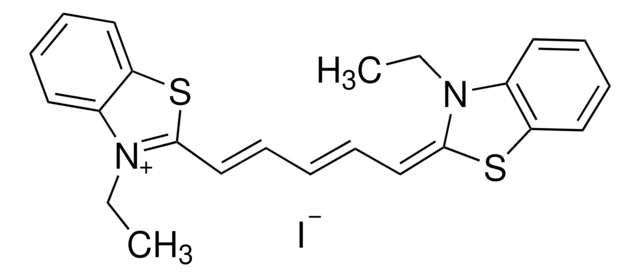Wichtige Dokumente
201715
1,1′-Diethyl-2,2′-carbocyaninchlorid
Synonym(e):
2,2′-Trimethinchinocyaninchlorid, Chinaldinblau, Pinacyanolchlorid
About This Item
Empfohlene Produkte
Form
powder
Qualitätsniveau
mp (Schmelzpunkt)
270 °C (dec.) (lit.)
λmax
560 nm (2nd)
604 nm
ε (Extinktionskoeffizient)
≥150000 at 603-609 nm in ethanol at 0.001 g/L
≥65000 at 559-565 nm in ethanol at 0.001 g/L
Anwendung(en)
diagnostic assay manufacturing
hematology
histology
Lagertemp.
room temp
SMILES String
[Cl-].CCN1C(=C\C=C\c2ccc3ccccc3[n+]2CC)\C=Cc4ccccc14
InChI
1S/C25H25N2.ClH/c1-3-26-22(18-16-20-10-5-7-14-24(20)26)12-9-13-23-19-17-21-11-6-8-15-25(21)27(23)4-2;/h5-19H,3-4H2,1-2H3;1H/q+1;/p-1
InChIKey
FVMNARAKYNRZID-UHFFFAOYSA-M
Suchen Sie nach ähnlichen Produkten? Aufrufen Leitfaden zum Produktvergleich
Verwandte Kategorien
Biochem./physiol. Wirkung
Signalwort
Warning
H-Sätze
Gefahreneinstufungen
Eye Irrit. 2 - Skin Irrit. 2 - STOT SE 3
Zielorgane
Respiratory system
Lagerklassenschlüssel
11 - Combustible Solids
WGK
WGK 3
Flammpunkt (°F)
Not applicable
Flammpunkt (°C)
Not applicable
Persönliche Schutzausrüstung
dust mask type N95 (US), Eyeshields, Gloves
Hier finden Sie alle aktuellen Versionen:
Besitzen Sie dieses Produkt bereits?
In der Dokumentenbibliothek finden Sie die Dokumentation zu den Produkten, die Sie kürzlich erworben haben.
Kunden haben sich ebenfalls angesehen
surfactants in aqueous medium
Unser Team von Wissenschaftlern verfügt über Erfahrung in allen Forschungsbereichen einschließlich Life Science, Materialwissenschaften, chemischer Synthese, Chromatographie, Analytik und vielen mehr..
Setzen Sie sich mit dem technischen Dienst in Verbindung.
